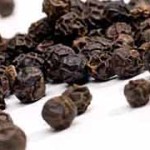What Is The Difference Between Tinea Versicolor And Vitiligo
Tinea versicolor is a fungal infection that causes raised, light colored patches on the skin. Vitiligo is an acquired skin condition where there are white patches on the skin in areas where pigment-producing cells have been destroyed. The two conditions are not related, but they can occur at the same time.
What is Tinea Versicolor?
Tinea versicolor is a condition that causes the skin to develop light-colored patches. The patches may be scaly or flaky. They can occur on any part of the body, but they are most common on the back, chest, and shoulders.
Tinea versicolor is caused by a fungus called Malassezia. This fungus is found on the skin of many people. It does not usually cause problems, but it can overgrow and cause tinea versicolor in some people.
Tinea versicolor is not contagious. You cannot get it from touching someone who has it.
There is no cure for tinea versicolor, but it can be treated with antifungal creams or lotions. These treatments kill the fungus and allow the skin to return to its normal color. Treatment may need to be repeated several times to keep the fungus under control.
What are the Symptoms of Tinea Versicolor?
Tinea versicolor is a common skin condition that is caused by a type of yeast. The yeast overgrowth causes the skin to become scaly and flaky. It can also cause the skin to change color, which is why it is sometimes called “pityriasis versicolor.” The most common symptom of tinea versicolor is a rash that typically appears on the chest, back, shoulders, or neck. The rash may be itchy or have a burning sensation. It can also cause the skin to peel. In some cases, the yeast infection can spread to other parts of the body, such as the face, groin, or scalp.
How Do You Treat Tinea Versicolor?
There are a few different ways that you can treat tinea versicolor, depending on the severity of your case. If you have a mild case, you may be able to treat it with over-the-counter (OTC) antifungal creams or lotions. These include products like clotrimazole ( Lotrimin AF) and terbinafine ( Lamisil AT). If you have a more moderate to severe case, your doctor may prescribe oral antifungal medications, such as fluconazole ( Diflucan) or itraconazole ( Sporanox). In some cases, people with tinea versicolor may also need to use medicated shampoos containing selenium sulfide ( Selsun Blue) or ketoconazole ( Nizoral).
Difference between tinea versicolor and vitiligo
Tinea versicolor and vitiligo are both skin conditions that can cause your skin to lose color. However, there are some key differences between the two. Tinea versicolor is caused by a fungal infection, while vitiligo is an autoimmune disorder. Tinea versicolor can be treated with antifungal medications, while vitiligo cannot be cured but can be treated with light therapy or steroids.
Other options for Vitiligo treatment
There are several other options for Vitiligo treatment. These include Ayurvedic treatment, natural remedies, Woods’ Lamp etc. Certain vitamins, and foods like black pepper, are also very helpful in Vitiligo treatment. As always, it is recommended to get a professional opinion before starting a treatment process.












